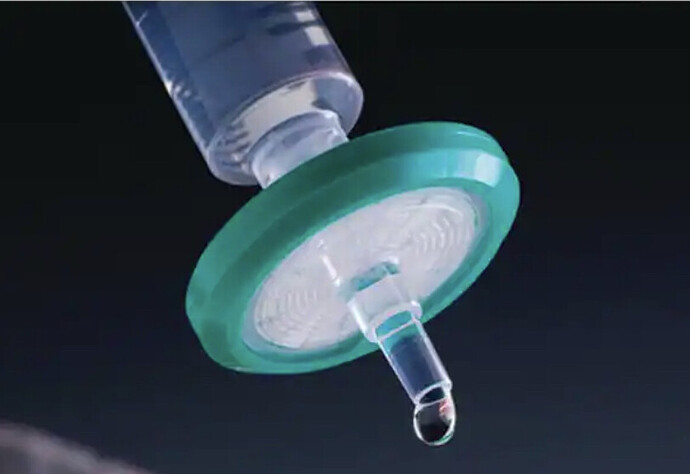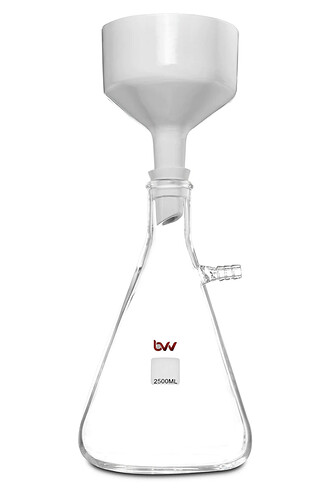If you have a proper nanoemulsion, the average particle size should be below 0.2u anyway, so we’re filtering the solution through a filter that has a larger pore size than the bulk of your material.
The reason we use 0.22 micron is two fold, first is that filtering through this pore size is generally considered sterile filtration. We can certainly debate this topic, but the generally accepted consensus is that anything filtered through a 0.22 micron is “sterile”. Assuming you are using sonication as the mode of emulsion, the sonication horn is going to flake off small pieces of the horn into the solution. Filtering will capture all of these.
If you are only filtering 50mL batches at a time, it shouldn’t take more than a couple minutes. Surface area available to filter through will impact your speed of filtration. So if you filter your 50mL solution through a 1 inch diameter vs a 2 inch diameter filter paper, the larger surface area should provide a greater filtration speed, at least to start with as the filter paper starts to catch anything above the 0.22 micron size and that’s when filtration will start to slow.
You will most likely not be able to gravity filter this, so you have three options:
-
Vacuum assisted filtration. This is self explanatory but can create some foaming if you use surfactants in your nanoemulsion. Not a huge deal, but can become annoying to deal with.
-
Positive Pressure Displacement. This can be broken down into the other two options. First would be using air pressure to push your material through the filter (this could be similar to using a syringe filter as well). You can use a peristaltic pump to push the material through the filter as well.
Each method will be better suited for certain filtering techniques. Vacuum assisted is ideal for buchner funnel filtration. If you are using a capsule filter or some kind of enclosed vessel with a filter at the base, the other two methods can be employed.
Please keep in mind that if you do encounter resistance in the filter due to large particle sizes slowing down the rate of filtration, using a positive pressure technique can cause the filter to blow out, or may cause other issues related to pressure build up. Vacuum assisted filtration may not have the same maximum speed of filtration, but you also don’t risk blowing out a filter or back pressure building up.
There are a lot of nuances here, but at the end of the day this is just a simple filtration process. Set up a vacuum flask, connect the hose barb to a vacuum, attach a filtration apparatus on top that contains the filter membrane, pour in your 50mL solution, turn the vacuum on. That’s the gist of it. Or pour your 50mL solution into a 100mL syringe and put a syringe filter on the tip. If you encounter excess resistance, turn the syringe upside down, draw the solution back slightly, replace the filter tip with a new filter, then resume filtration.

